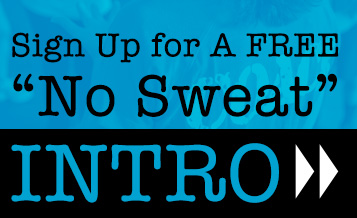19th November 2019

Accessory work and why you need it.
Accessory work and why you need it!
What is it?
General CrossFit programming is far from perfect. It has to be prescribed in a ‘most, most, most scenario. Most people, most of the time in most circumstance require GPP-general physical preparedness and a program to that effect. The trouble comes with individual issues surrounding mobility, stability and correct load ordering. Correct load ordering is the sequencing that muscles fire off and there are many with those problems. In fact, almost every person that walks through the doors has a mobility, stability or CLO issue. Accessory work is the movements that, over time, correct these faults. They plug the holes that are missing in either programming or person. In short, they are an absolutely essential part of a person’s exercise arsenal if they wish to progress and stay pain free. They correct posture, enhance stability and mobility thus reducing the risk of injury and ensure that the CLO is as it should be: core to periphery.
In individualised programming, it forms the bulk of time spent in the gym, or it should do. Regional and games athletes spend more time here than WOD’s and it is absolutely essential for their progress. It takes a skilled eye to recognise these insufficiencies and offer corrective exercises and that can only be built over time.
The goal here is not to give a thousand exercises for you to try, that is too expansive, rather the goal is to educate and highlight the importance of accessory work. I know that many of the top athletes get approached by those wishing to aspire to those levels asking for advice and when they prescribe a big bunch of accessory work it’s normally met with distain. This stuff isn’t exciting! It can be dull repetitive work, if you chose to look at it that way, or you can look at it as you are building yourself your future, a bullet proof body that can withstand whatever is thrown at it.
This is not just for ‘elite’ athletes or those wishing to be competitive. It is critical for all if they wish to stay injury free and progress with their fitness journey. You could argue that beginners and intermediate level members need accessory work as a priority so as to create a solid foundation from which to build upon.
Most decent therapists will tell you that the success of a patient is so heavily dependent on the consistency and frequency of following the clinician’s advice. Doing the corrective exercises as prescribed is, perhaps, the biggest factor in determining success.
There is no glory in it, no sweat and you shouldn’t need it, but you do.
How often do I need it?
Specifically, this should be prescribed to you by someone suitable and knowledgeable but there are some general rules – often and high rep!! Don’t forget, we are trying to correct, perhaps, years of poor positioning. If it’s taken you 10 years for your shoulders to protract then it will take a considerable amount of time to correct that. High repetition and light load is the basis for the bulk of accessory work and will start to correct postures over time. If, for example, a muscle needs shortening (quite often the case with poor posture, as well as the opposing muscle needing lengthening) then you need to reduce the amount of sarcomeres within the series…. Say what?! If you can imagine a single muscle fibre running along the length of a limb, your upper arm for example, and then imagine that fibre with lots of segments, like a worm, those segments are like little walls that sliding filaments attach to. Those sliding filaments ratchet together to bring the sarcomeres together thus shortening them and contracting the muscle shorter – picture a bicep curl. To shorten a muscle you must work it often in a shortened range. So for someone with protracted shoulders (forward) they would pull them back into the right place then go to work with high reps, light loads and very often. Naturally the body will adapt and over time, lengthen the muscle at the front to achieve balance. This approach can be done with almost any joint positioning that needs correcting.
Good news!!
If programmed correctly it can form the early part of your warm up. Because the movements are light they are very safe and because they are high rep they will draw blood and heat to the area. It serves as a primer to make sure the muscles you are trying to improve, fire correctly!
Who can show me?
A good experienced coach should be able to program, demonstrate and correct the movements required. Physiotherapists are also an excellent source of knowledge for corrective movement. James Jowsey (coach to Sam Briggs, Emma McQuaid) has built an amazing reputation and business in the large part, corrective exercise, movement issues and CLO. In general, however, experience, reputation and the professionalism (constant learning) of the coach should be priority.
Here’s the rub….
Knowing what to do is not even half the battle. You’ve actually got to do it! I’ve taught many corrective exercises and when to use them in class and to individuals only to find that not many actually continue the work that they need. Dedicating some time and effort will pay off in building you a system that is much more ready to adapt and reduce the risk of injury. As above: There is no glory in it, no sweat and you shouldn’t need it, but you do.






